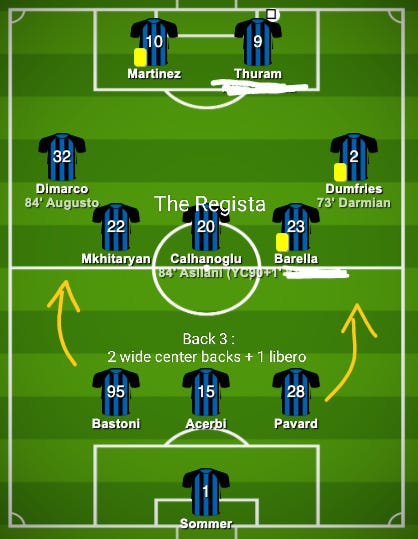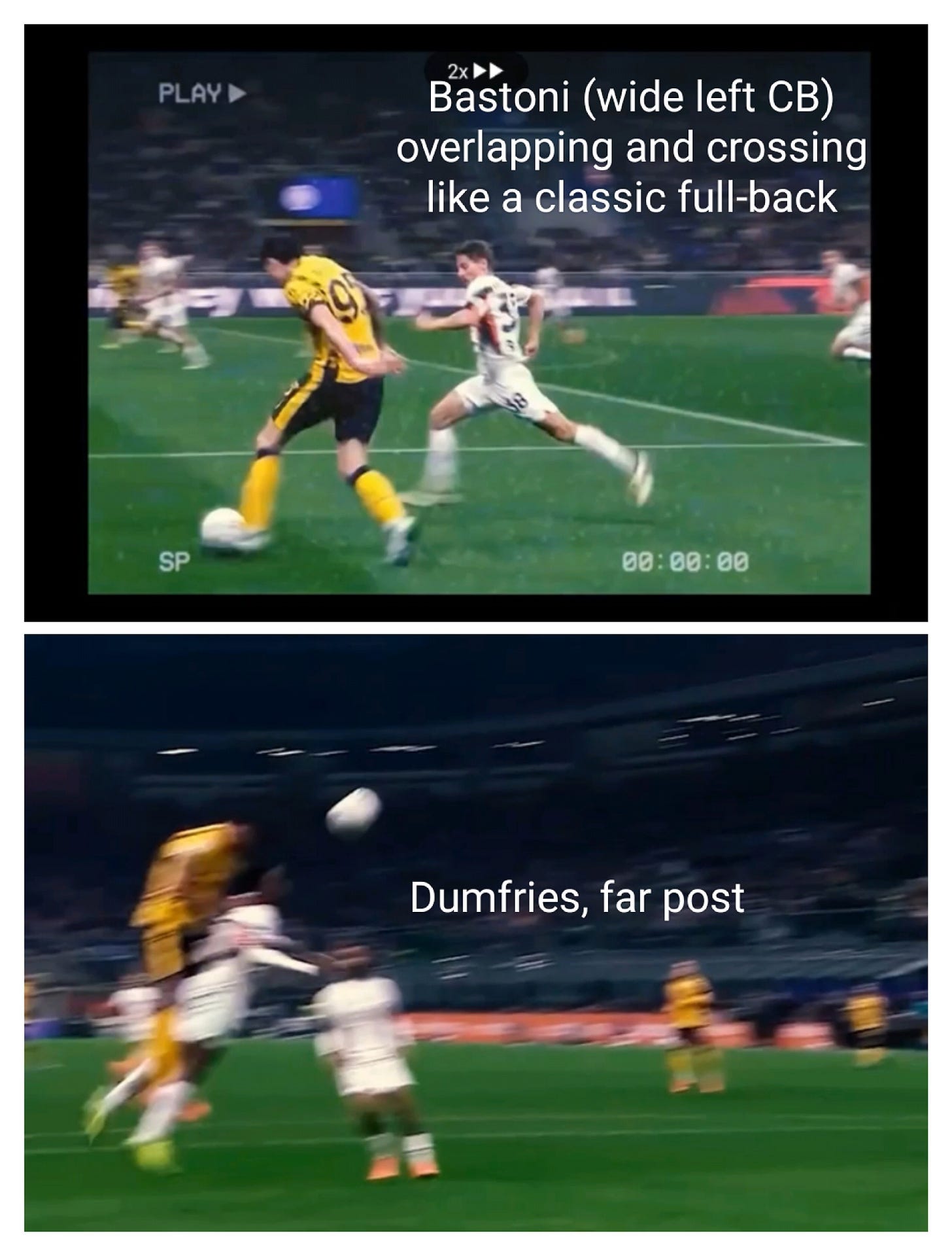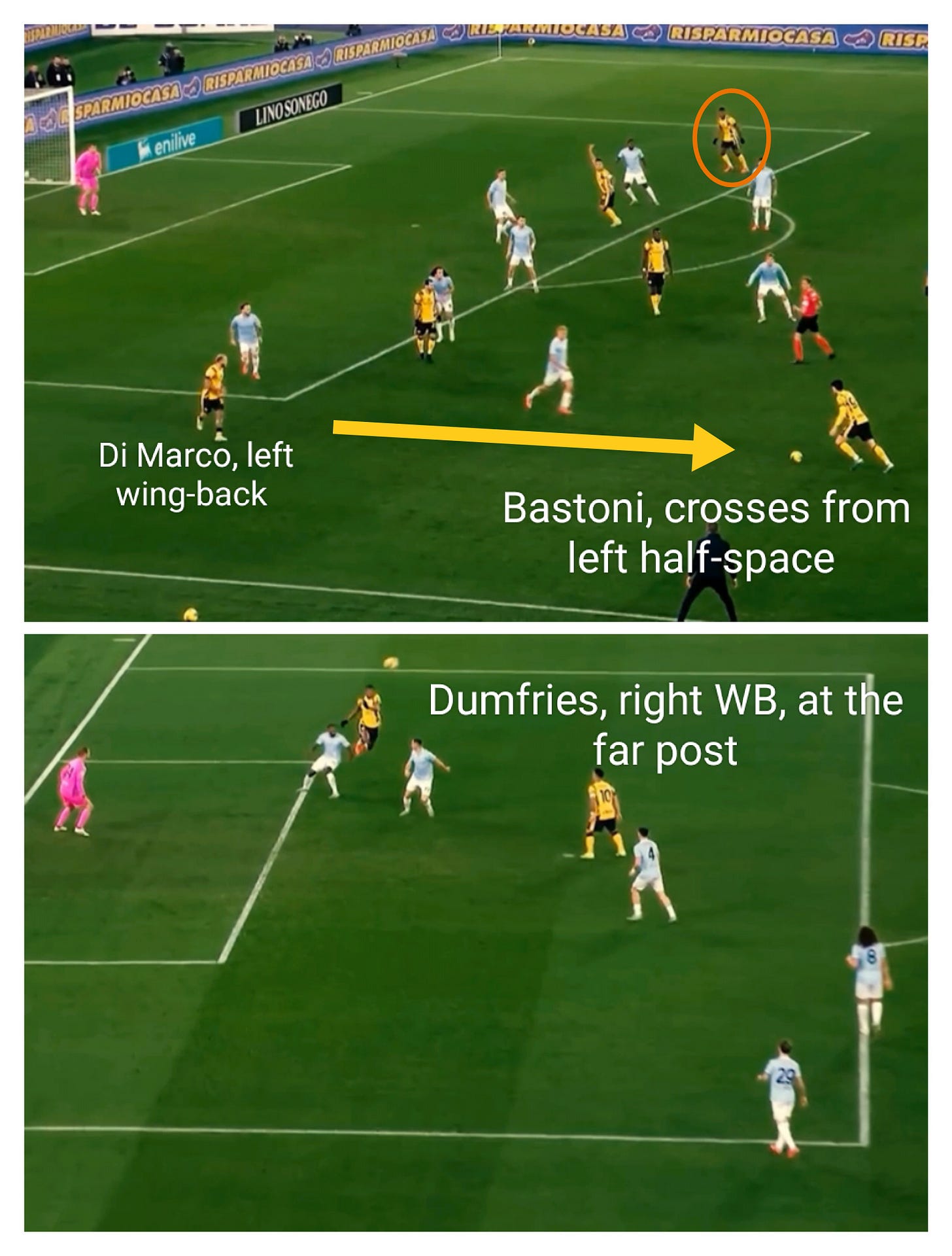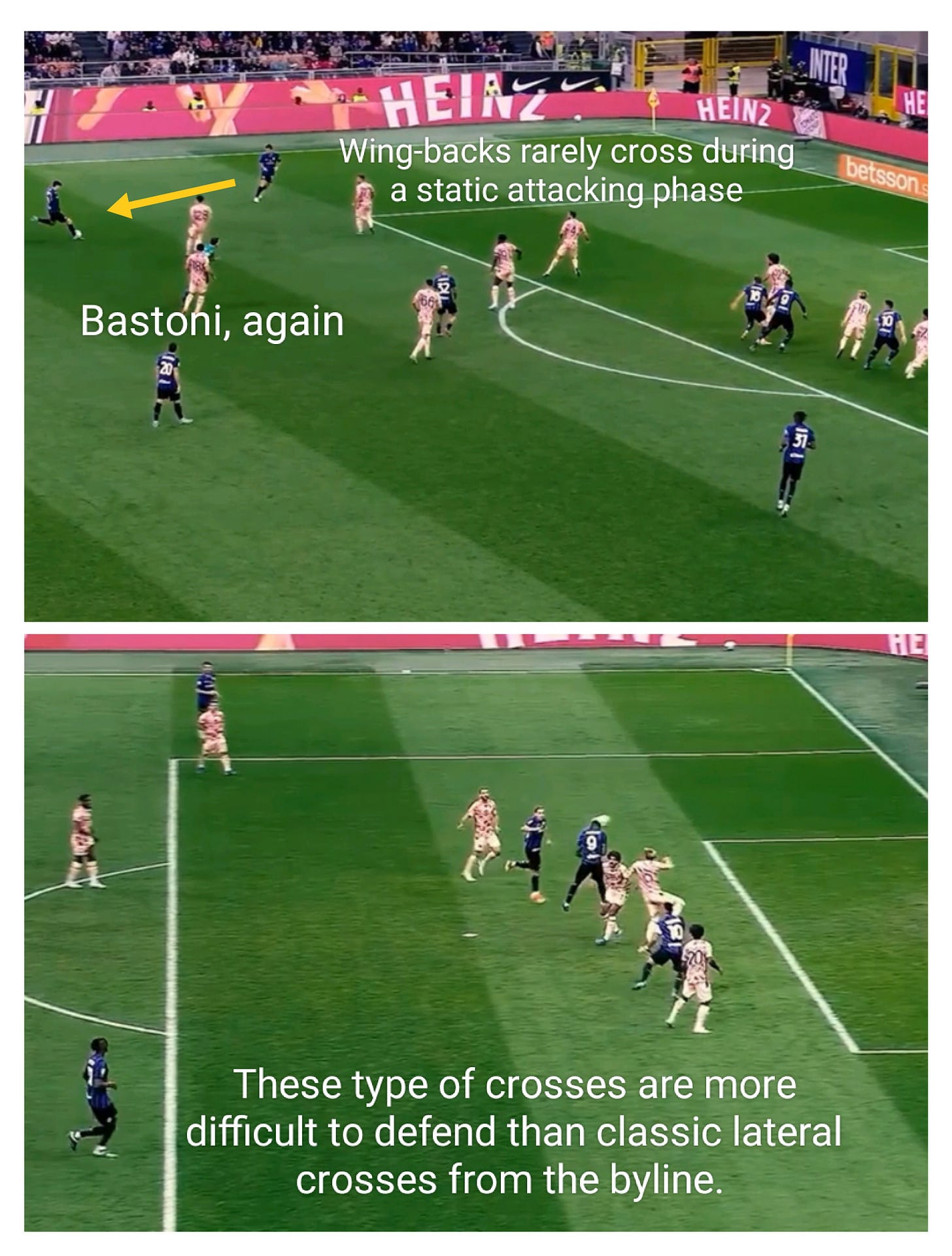A Tactical Breakdown of Inzaghi’s Inter Milan
Inzaghi’s Inter Milan is a tactical chameleon, constantly shifting and adapting on the pitch. But that comes at a price.
On paper, they line up in a 3-5-2, but heavy rotations make their setup incredibly fluid. You’ll see midfielders dropping into defense, center-backs popping up in attack, and wing-backs making unexpected inside runs.
While they’re primarily built for counter-attacks, they’re also capable of pressing high when the situation demands it.
DEEP POSSESSION
Inter’s build-up play is patient and deliberate : they hold deep possession around their box to tease the opponent and use heavy rotations to make it lose its shape.
When building from the back, Inter often morph into a back four in 2 distinct ways, depending on the opponent’s pressing profile :
1/ One wing-back high (often Dumfries, sometimes Di Marco) while the other stays deep.
2/ Alternatively, both wing-backs drop deeper, allowing the libero (Acerbi or De Vrij) to step into midfield and act as a pivot.
In both cases, the goalkeeper Sommer is heavily involved in order to create numerical superiority.
HOW THEY PROGRESS FORWARD
The goal of the deep possession is to create gaps in the mid-third of the pitch. Once those spaces open up, Inter accelerate with quick vertical passes. Their strikers, Thuram and Lautaro Martinez, are phenomenal at hold-up play. They pin defenders & win duels to set up a third man (usually a midfielder or wing-back) who's sprinting from a deeper area and into the free space.
WING-BACKS ROLES
On the counter, Inter’s wing-backs are key. Dumfries, for example, isn’t the most technical player. But he’s a beast at progressing the ball in open spaces, using his speed and physicality. He’s most often used as an attacking outlet : a target man for long balls or to makes late runs into the box.
A crucial tactic on counters : wing-backs tend to cross in one-touch as soon as they enter the final third (see Lautaro’s goal against Bayern Munich).
AGGRESSIVE CENTER BACKS
Inter’s wide center-backs (Pavard and most often Bastoni) add another layer of dynamism. Both are former full-backs, so they’re comfortable pushing forward and executing overlapping or underlapping runs.
In settled attacking phases, the wing-backs rarely cross from the byline. Instead, they recycle the ball to the wide center-backs, who then deliver crosses from the half-spaces. Bastoni’s left-sided deliveries to Dumfries at the far post have become a recurring and dangerous pattern for Inter.
SET PIECES
With players like Calhanoglu and Barella delivering pinpoint balls, Inter often target the far post, where aerial beasts like Thuram and Dumfries can dominate.
SOME FLAWS BARÇA COULD EXPLOIT
1/ Inter’s fluidity isn’t without flaws. The trade-off of their heavy rotations is the risk of leaving their defense exposed. If they lose the ball in their own half with defenders out of position, it creates mismatches : imagine a fast winger like Yamal or Raphinha facing a midfielder like Calhanoglu or Mkhitaryan in a 1v1, rather than a traditional defender like Bastoni. That’s a dangerous scenario for Inter.
2/ Another potential weak link is Matteo Darmian at right wing-back. He struggles to defend the far post (watch for if Lamine is crossing from the right) and lacks composure under pressure. Compared to Dumfries, he also offers less in attack, making him a potential target for opponents.
Not only Darmian : in general, there's a gap in level between Inter Milan's starters and substitutes. And they're not of the same profile. For example, Bisseck is an athletic CB but not as good as Pavard going forward. Frattesi is more of a box to box midfielder with good goal-scoring ability, way less assured in ball circulation than Barella or Mkhitaryan.
3/ Inter’s aggressive center-backs often leave the defensive line to push forward and neutralize threats in midfield, which creates temporary gaps in the backline. Clever runners like Olmo, Fermin, or Ferran could exploit it with well-timed runs.
Barça could also use a player like Koundé in more central areas in order to drag Inter’s center-backs out of position, further exposing those gaps.
4/ Finally, let’s talk about Calhanoglu, Inter’s ‘regista’. He’s a former #10, which means performing the defensive duties of a classic defensive midfielder aren’t his strong suit. Fast ball circulation and quick side-to-side passing can pull him out of position, leaving the edge of the box exposed (perfect for cutbacks or late runners).
CONCLUSION
Inzaghi’s Inter Milan is chameleonic and fluid, a joy to watch, but not flawless. Their tactical adaptability makes them a formidable side, but smart opponents can find ways to unlock them.





